Gallery: ACMI
Exhibition: Thor: Love and Thunder Costumes
When Runway emailed me on a cold weekday afternoon in May, I was eating a croissant — not literally of course but spiritually.1 I was mid-bite, and being really elegant about it too. As if I’d be anything else? Come on, this is me we’re talking about — one of this city’s most existing ingenues! But please don’t let my dazzling reputation as a multi-award wanting writer and performer distract you from the reality that I’m just another freelancer like the rest of you. I go through the same ups and downs. I take the same trams in nothing but an overcoat over a silk slip I tried to make work as a dress. I sit on the same balconies, throwing my head back in laughter — or as is so often the case, the beginnings of a bronchial infection — just like the rest of you. And just like the rest of you, I too wait day and night, for that one lucky break that will make everything worth it.
So, when an email from Runway popped into my inbox, you can understand why I immediately rose from my chair, kicked it to the ground and jumped up and down yelling at 'God' to 'suck it'.
Unfortunately, two bottles of 2022 Remedy Kombucha later, I actually opened the email and realised I may have begun celebrating too quickly. It was NOT Meryl Streep from Runway Magazine (as featured in the iconic documentary The Devil Wears Prada) who was contacting me. No icy shards of critique, that secretly encouraged me to career-defining and vaguely feminist success, awaited me on this assignment. Instead, this was just an email from some guy called 'Diego Ramírez', the editor of Runway… Journal. Ugh.
Worse still, when my eyes refocussed after crying, I saw that 'Diego' was asking me to review the new costume exhibition at ACMI — 'a set of six costumes from the film Thor: Love and Thunder'. I immediately replied and told him that he must have the wrong end of the stick and that I had not seen Thor: Love and Thunder or actually any of the Thors due to being blessed with an extremely thick ass. However, this didn’t seem to deter 'Diego', as he insisted that my take would be 'interesting' for 'someone going into it purely with an artistic eye'. He then added that 'You may have something to say about the link between Australian cultural institutions and studios from the States as a form of soft power imperialism'. But as soon as I read that sentence I felt my ass start to shrink so I immediately closed my laptop and headed for ACMI, before his words could embed into my brain any further.
As I approached the exhibit, I noticed several placards explaining the film and the meaning behind the costumes. Even from a distance — with their classic white rectangle and black font aesthetic — they announced themselves as full of information.
I was about to read from the largest of these rectangles when I remembered it was my very outsiderness — my charmingly uninformed yet astute eye — that this 'Diego' valued so highly. (And who could honestly blame him? Time and time again as he must have heard, it has been my lot to be the sole wit at a party, holding its entire fabric together with the sheer force of my insights into various subject matters—some of which I haven’t even had the chance to absorb in a half-read notification or disappearing insta-graphic.)
I shunned the placard and instead turned to the two long glass cases that housed the six Thor: Love and Thunder costumes — three on each side, a narrow laneway in between to stand in. As I did this, I suddenly remembered that artists need to stop devaluing themselves, and if I was to lead that change (as I’d always assumed I would), there was no time like the present. Taking my inspiration from lawyers who love telling you they bill in six minute units, I set a timer for six minutes and entered the exhibit.
Six minutes in Thor: Love and Thunder Costumes
Costume One
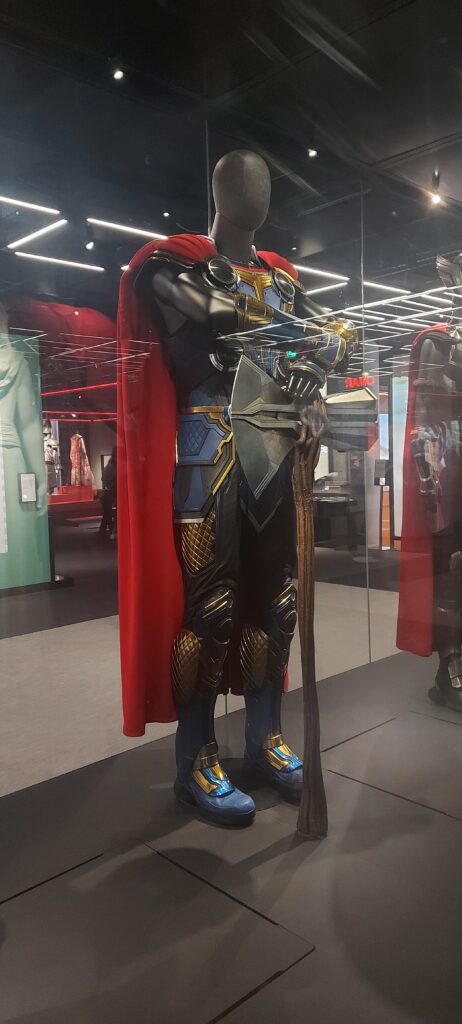
A big axe and a cape. Belonging to what we’d commonly read as a 'man', if the mannequin’s build is any indication. I notice that the ratio of axe length to body length is very small, implying a great deal of upper body strength. It’s just not normal to lift an axe that large with this kind of height. You would at least expect this man to be more ripped than the mannequin lets on.
Since I have a faint acquaintance with Norse mythology and 'Diego' did not bother to redact the name of this exhibition (or instruct the gallery to do so for my visit), I start to feel strongly that this must be the Thor of the title. When a child passes behind me and says “Thor!” my suspicions are confirmed.
What use are my insights after this? I feel disappointed in Generation Alpha’s lack of respect for the arts, for critical culture, for my personal space. I feel impure.
I turn my back on the child, and consequently Thor and his giant axe.
Costume Two
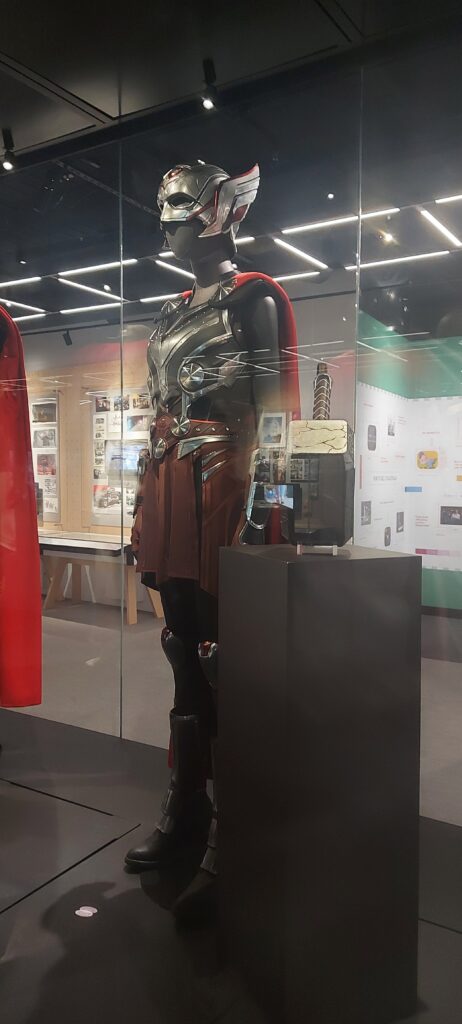
Next to Thor, on his right, another mannequin wears a very similar costume. It has a similar red cape, draped regally in a similar armour — except for the titty shaped mounds on the chest plates. This variation tips me off that this must belong to what we’d commonly read as a 'woman'. Given the similarity of outfits, I assume this woman is a mirror of Thor, perhaps even some kind of fantastical double? A Thor-esse, if you will. Yet, she has no giant axe with her…
Now, I would never call Thor a misogynist in public — just as I would never call any man a misogynist in public, think of the DMs — but this certainly feels significant. I cannot help but think this Thoresse is an expression of Thor’s libidinous desire for himself. It’s giving Adam making Eve from his rib energy, for sure.
Costume Three
To the other side of Thor, a peaceful sight. A beige vision with monk overtones, a robe stitched to offer an almost formless appereance, with loose and slopping lines that lead our eyes to the ground, as if to say — ground yourself. There is also a wave like pattern on the fabric, reinforcing a sense of flowing and organic energy. It all gives a whiff of mid-career Issey Miyake perfume, I want to say. Did he do perfumes?
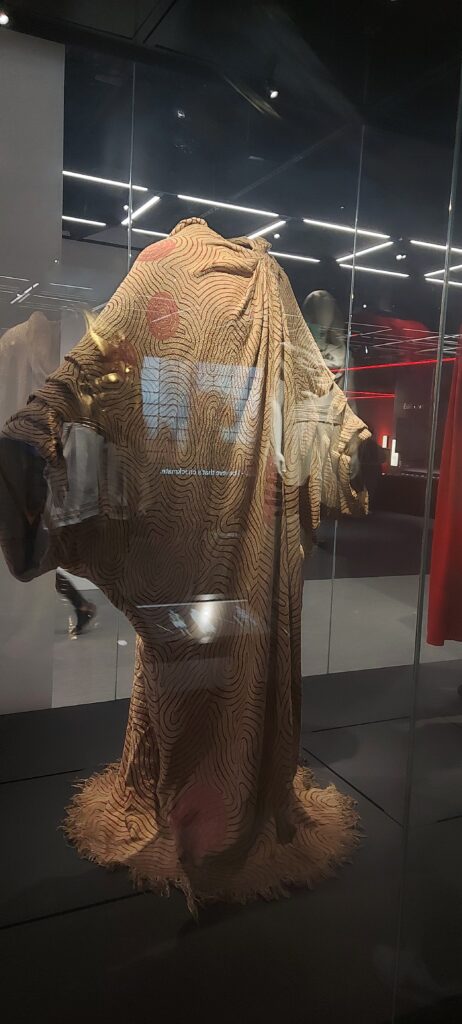
Most interesting to me though, is the placement of this mannequin next to the comparatively loud Thor and Thoresse. All I can feel from them now is heteronormative bluster and military ambition. It is like a chiding: do not be impressed by the arrogance of metal when there is earth. As I contemplate this, I suddenly notice the monk mannequin is completely headless, unlike the Thor and Thoresse beside him. I am horrified to have not realised this immediately.
It is a chilling symbol of the cost of keeping innocence and faith in the midst of endless Nordic conquest.
I whisper a quick prayer for a better world.
Costume Four
As I turn around I come face to face with another placard, as this placard is placed at hip-height for a standing visitor and I am on my knees having just been in prayer. Before I can stand up, information from the placard begins to swim towards me, so I have no choice — I quickly summon an eclipse to temporarily blind myself.
I am staring up at the gold-plated vest of yet another ripped mannequin. It hurts my eyes. I persevere and try to take in the lightning bolt by his side — also golden. I notice he has incredible bangles. One of his legs also popped out in a pose, like he was really trying to be slay.
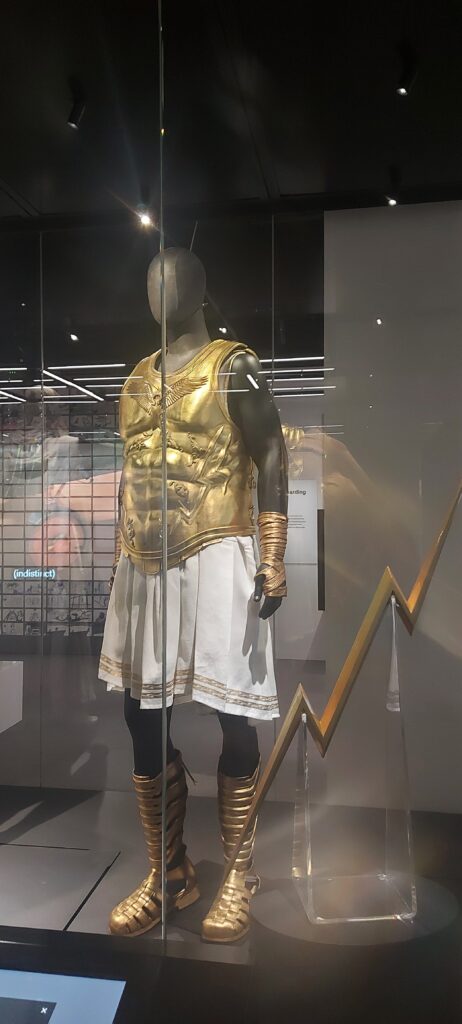
It feels obscene to place such a glamorous Twunk opposite the monk. In fact, the highly reflective glass of the display cases ensures that you can see one costume reflected against the other. Perhaps this is the curatorial point? It contrasts austerity and opulence — another set of doubles, much like Thor and his Thoresse. One cannot exist without the other.
Who is my double? I wonder to myself as I hobble to my feet. And if I met them… would I feel the urge to suck and fuck or to simply kill?
Even art that is clothes can make us take the measure of ourselves. Meryl knew that, and so should we all.
Costume Five
I could not access this costume as two women were standing in front of it. They were speaking loudly, and saying things like 'I hated this movie so much' and 'It was trying to be a comedy but I wanted it to be a Thor' and 'I don’t know what they were doing when they made this' and also 'I was sitting in the cinema thinking you’ve got to be kidding me.'
I interrupted their conversation to ask them if they were enjoying the exhibit and they said 'oh yeah the costumes are great, I just hated the movie. I wanted my 20 bucks back.'
From their use of the word 'bucks' and also their heavy American accents, I ascertained that they were American. I wondered what brought them all the way across many flights and several oceans to see the Thor: Love and Thunder Costumes exhibit, but I thought it would be impolite to pry any further.
Were we not all, at the end of the day, just people looking at these costumes, for reasons that were probably different but equally valid? Some of us had seen the film and had firm opinions, and some of us had not and never will. Ultimately, we all come to culture for different and equally beautiful reasons. Whether that reason is a strong emotional connection to a franchise (that you kind of envy because it must be nice to feel that intensely about something) or simply because a journal has emailed us and offered us money and we want that money — it is all fine and wonderful.
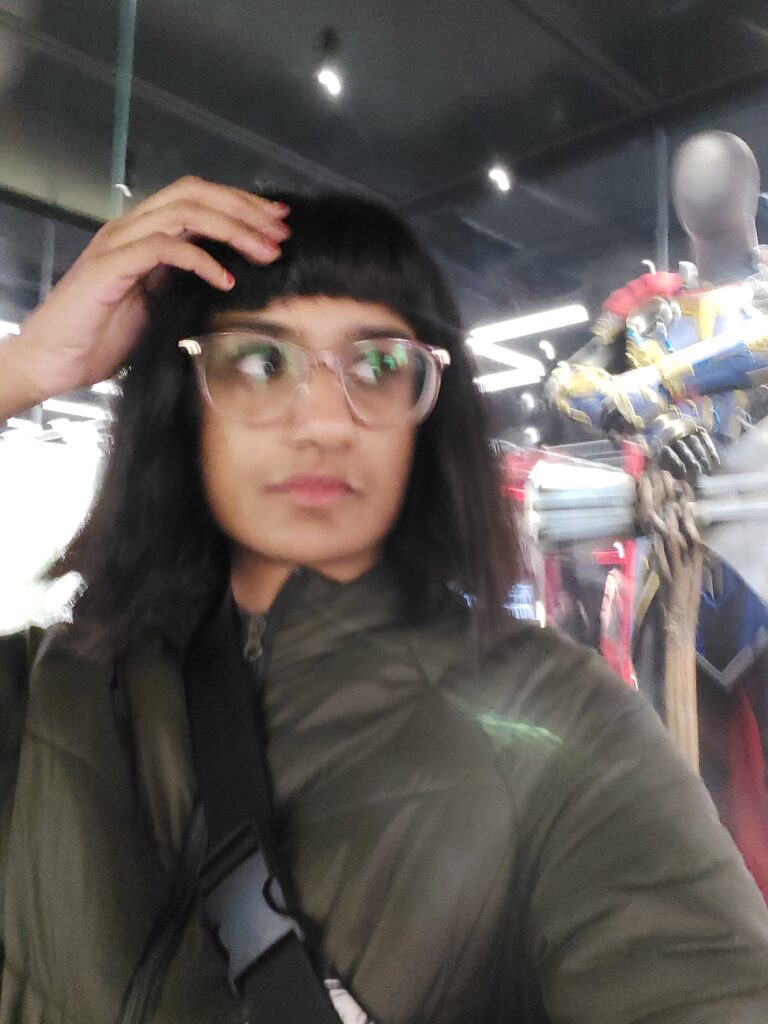
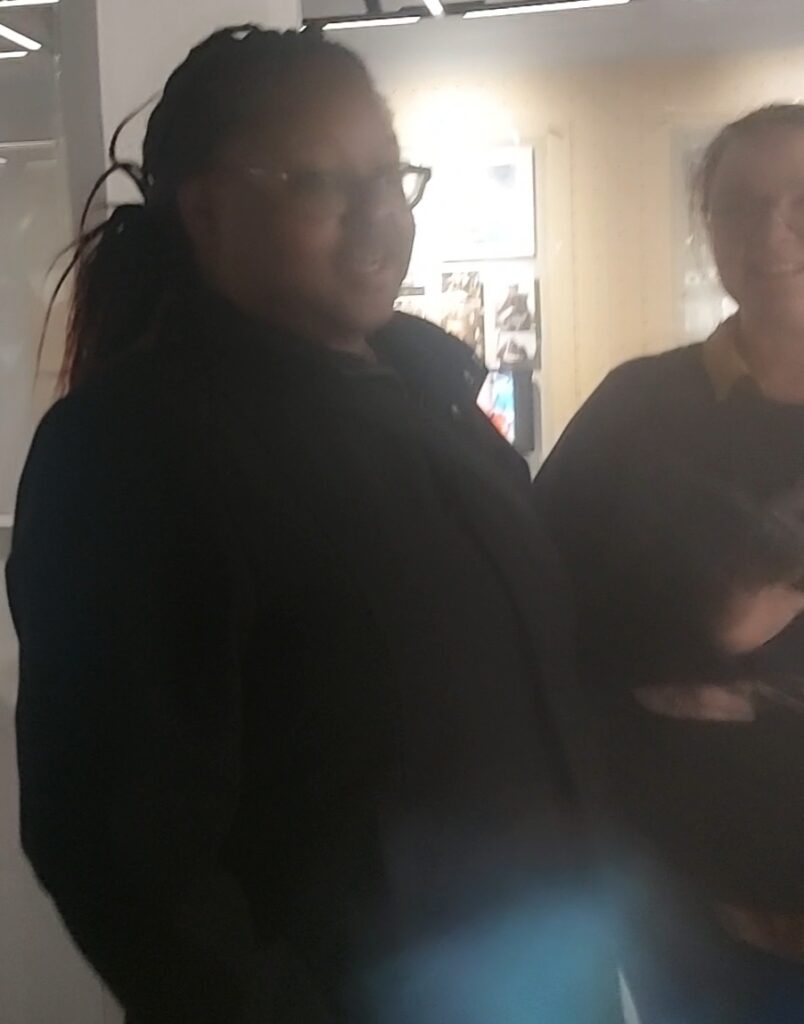
Costume Six
I only had about ten seconds left of my six minutes to take in this last costume. It was giving monk vibes but evil, as signified immediately by the mannequin having a head. A good monk, as I had learnt four minutes ago does not have a head. Worse, this head was draped by a hood, so there was clearly something malevolent here.
My alarm only rose as I noted a belt cinching the mannequin’s waist that forced the loose monkish fabric into a flared skirt-like shape. As if that wasn’t enough, the costume was draped with a heavily pleated over the shoulder cape — a stark contrast to the heavily ironed straight-laced capes of the “good guys”. It was clear I was in the presence of a villain.
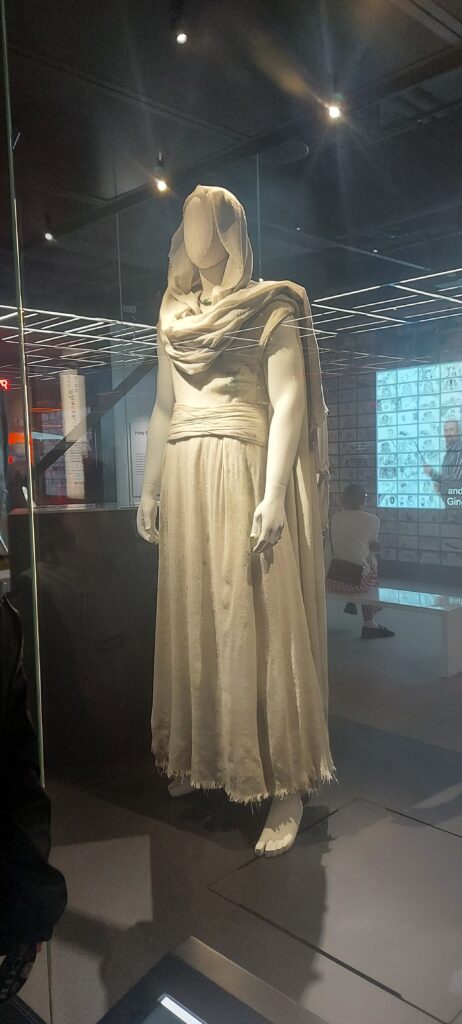
My encounter with the Americans had left me contemplative though. Like any normal person, hearing Americans hate on things immediately brings up for me the spectre of middle-eastern conflict. As I looked at the villain again, I was compelled to do what few Presidents had ever done — I checked myself before I wrecked myself. Why, I dared to ask in my inner mind, do we so easily regard draped fabric with suspicion? What is it about a hood that feels 'other' to us? Were such costumes not also part of my culture in some way — this villain could easily be in a salwar kameez — and YET I had so quickly assumed malfeasance? What had American cultural imperialism done to my worldview to make me jump to such an interpretation? Was I not safe from its grasp even in the bowels of the AUSTRALIAN Centre for the Moving Image?
As I thought this last thought, I felt a layer of collagen shed off my backside and slide down my pants, so I closed my eyes and ran for the exit.
Returning home to my apartment, I pulled my laptop out of the wedge in the couch it had fallen into, wiped off the slivers of Lotus Biscoff nestles in the keys, and typed up my unfiltered impressions of Thor: Love and Thunder Costumes.
I did not pause to edit or doubt myself for a second.
I even smiled at this 'Diego' through the ether — a man, a phantom, an editor of some sort? I will never really know. And that’s okay.
About to press send, I pause and raise my hand slightly (just as Anne Hathaway did in the last minutes of that film as she stood in New York traffic in her old terrible clothes like she’d learnt nothing) to almost wave. For Anne, it was a gesture that said 'Enough and 'Goodbye' and also 'I will win an Oscar one day'. But for me, it’s also all of those things.
1. Editor’s Note: This article was a commission for the Editor In Residency program at un Extended, we’re not sure why the writer thought it was for Runway Journal, though we appreciate the association. When we requested a correction, she merely sent us this photo:

Vidya Rajan is a writer & performer currently based in Australia working across screenwriting, theatre, comedy, and digital space.
un Projects’ Editor-in-Residence Program is supported by the City of Yarra, Creative Victoria and City of Melbourne
Editor: Diego RamírezAll images provided by author.
